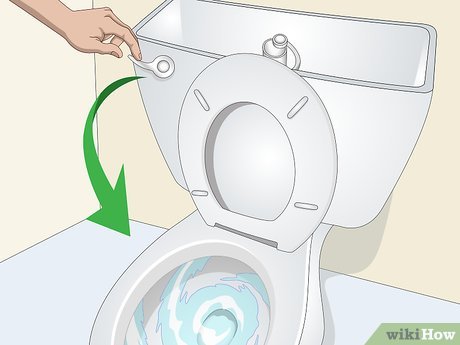Overflowing toilets demand immediate attention to prevent water damage and inconvenience. An overflow not only poses a threat to your bathroom but can also lead to structural damage if left unattended.
II. Safety Precautions
Wearing rubber gloves and clearing the area ensures a safe unclogging process. Toilet water may contain bacteria, and having a clear workspace prevents accidents.
III. Gather Necessary Tools
Have a plunger, bucket, and old towels or rags on hand. A plunger is a homeowner’s first line of defense against toilet clogs, and a bucket and towels are essential for managing potential messes.
IV. Assess the Water Level
Remove excess water with a bucket if it’s near the brim. This step is crucial to avoid splashes and to create a more effective seal with the plunger.
V. Plunging
Position the plunger, apply firm pressure with a rhythmic motion, and repeat until water drains. Make sure the plunger forms a tight seal around the drain opening for maximum effectiveness.
VI. Flush and Check
Ensure proper drainage by flushing the toilet, repeating the plunging if necessary. A successful flush indicates that the clog has been cleared.
VII. Clean Up
Dispose of waste, clean the plunger, and surrounding area. Wash your hands thoroughly. Proper cleanup is essential to maintain hygiene and prevent the spread of bacteria.
VIII. Prevention Tips
Use less toilet paper, avoid flushing non-flushable items, and consider periodic maintenance with enzyme-based cleaners. Prevent future clogs by adopting good practices and maintaining a healthy plumbing system.
Outline 2: Using a Toilet Auger
I. Introduction
Overflowing toilets can be effectively addressed with the use of a toilet auger. When a plunger fails to do the trick, a toilet auger, also known as a plumbing snake, can reach deeper into the pipes to break up stubborn clogs.
II. Safety Precautions
Rubber gloves and a clear area are essential for a safe unclogging process. As with the plunging method, safety is paramount to protect yourself from contaminants present in toilet water.
III. Gather Necessary Tools
A toilet auger, bucket, and old towels or rags are necessary. The toilet auger consists of a flexible metal cable with a corkscrew-like tip, designed to navigate through pipes and break up clogs.
IV. Assess the Water Level
Remove excess water with a bucket if it’s near the brim. This step is crucial to ensure effective use of the toilet auger without causing spills.
V. Inserting the Auger
Extend and insert the auger into the drain, rotating the handle clockwise with gentle pressure. The goal is to guide the auger through the pipes, reaching the point of obstruction.
VI. Break Up the Clog
Continue turning the auger to break up the clog patiently. The corkscrew tip of the auger helps to grab onto and dislodge the blockage.
VII. Retrieve the Auger
Carefully pull the auger out, cleaning any debris from it. Take care not to splatter any water or waste onto the surrounding area.
VIII. Flush and Check
Ensure proper drainage by flushing the toilet, repeating the process if necessary. A successful flush indicates that the clog has been successfully removed.
IX. Clean Up
Dispose of waste, clean the auger, and surrounding area. Wash your hands thoroughly. Just like with the plunging method, proper cleanup is essential.
X. Prevention Tips
Use less toilet paper, avoid flushing non-flushable items, and consider periodic maintenance with enzyme-based cleaners. Maintaining these practices will help prevent future clogs and keep your plumbing system in good condition.
FAQs:
Q1: Can I use a regular plunger for unclogging?
A1: Yes, a regular plunger works well for minor clogs. Ensure a tight seal over the drain for effective plunging.
Q2: How do I know if I need a toilet auger?
A2: If plunging doesn’t solve the issue, or if the clog is deeper in the pipes, a toilet auger is a good next step.
Q3: Is it safe to use chemical drain cleaners?
A3: Chemical cleaners can be harsh and may damage pipes. Consider using enzyme-based cleaners for a more eco-friendly and effective solution.
Conclusion:
Facing an overflowing toilet is undoubtedly stressful, but with the right tools and techniques, you can handle the situation with confidence. Whether you choose the basic plunging method or opt for the more advanced toilet auger, following these step-by-step outlines will help you successfully unclog your toilet and maintain a smoothly running plumbing system. Remember, if the problem persists, don’t hesitate to seek professional assistance. Taking proactive measures and adopting good practices will go a long way in preventing future clogs and maintaining a healthy and functional bathroom.

A group of home improvement enthusiasts and bathroom design experts, combines in-depth knowledge and a shared passion to deliver engaging, informative content that guides readers through the world of bathroom innovation and style.

Leave a Reply